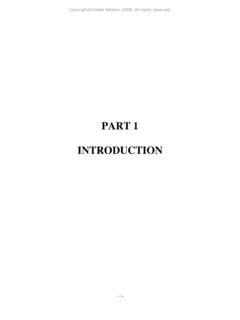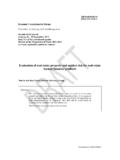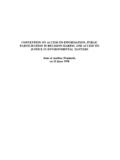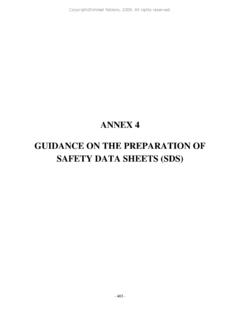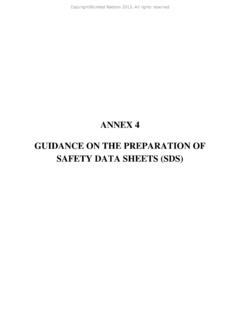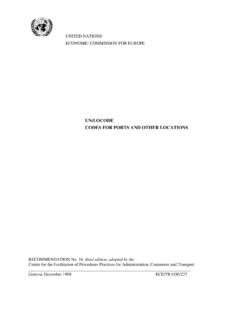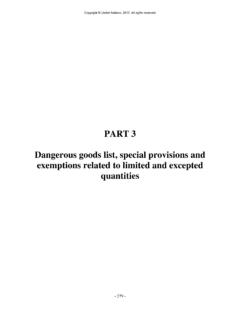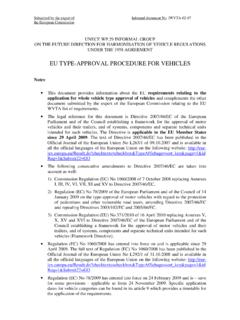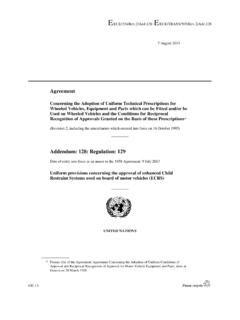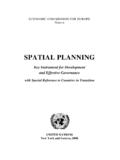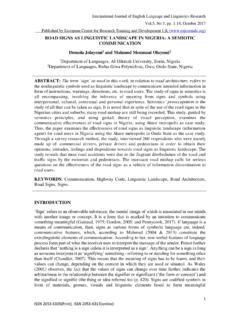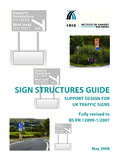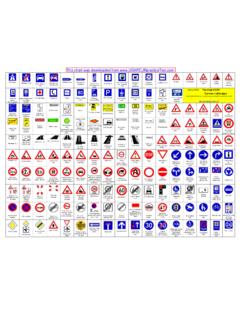Transcription of UNITED NATIONS ECONOMIC COMMISSION FOR EUROPE …
1 UNITED NATIONS ECONOMIC COMMISSION FOR EUROPEADRRoad map for accession and implementationUNITED NATIONS ECONOMIC COMMISSION FOR EUROPEE uropean Agreement Concerning the International Carriage of Dangerous Goods by road (ADR) road map for accession and implementationNoteThe designations employed and the presentation of the material in this publication do not imply the expression of any opinion whatsoever on the part of the Secretariat of the UNITED NATIONS concerning the legal status of any country, territory, city or area, or of its authorities, or concerning the delimitation of its frontiers or UNITED NATIONS , 2013 All rights part of this publication may, for sales purposes, be reproduced, stored in a retrieval system or transmitted in any form or by any means, electronic, electrostatic, magnetic tape, mechanical, photocopying or otherwise.
2 Without prior permission in writing from the UNITED NATIONS ECONOMIC COMMISSION for EUROPE (UNECE)The UNITED NATIONS ECONOMIC COMMISSION for EUROPE (UNECE) is one of the five UNITED NATIONS regional commissions, administered by the ECONOMIC and Social Council (ECOSOC). It was established in 1947 with the mandate to help rebuild post-war EUROPE , develop ECONOMIC activity and strengthen ECONOMIC relations among european countries, and between EUROPE and the rest of the world. During the Cold War, UNECE served as a unique forum for ECONOMIC dialogue and cooperation between East and West. Despite the complexity of this period, significant achievements were made, with consensus reached on numerous harmonization and standardization agreements.
3 In the post-Cold War era, UNECE acquired not only many new member States, but also new functions. Since the early 1990s the organization has focused on analyses of the transition process, using its harmonization experience to facilitate the integration of Central and Eastern european countries into the global markets. UNECE is the forum where the countries of western, central and eastern EUROPE , central Asia and North America 56 countries in all come together to forge the tools of their ECONOMIC cooperation. That cooperation concerns economics, statistics, environment, transport, trade, sustainable energy, timber and habitat.
4 The COMMISSION offers a regional framework for the elaboration and harmonization of conventions, norms and standards. The COMMISSION s experts provide technical assistance to the countries of South-East EUROPE and the Commonwealth of Independent States. This assistance takes the form of advisory services, training seminars and workshops where countries can share their experiences and best in UNECEThe UNECE Inland Transport Committee (ITC) facilitates the international movement of persons and goods by inland transport modes. It aims to improve competitiveness, safety, energy efficiency and security in the transport sector.
5 At the same time it focuses on reducing the adverse effects of transport activities on the environment and contributing effectively to sustainable development. The ITC is a: x Centre for multilateral transport standards and agreements in EUROPE and beyond, regulations for dangerous goods transport and road vehicle construction at the global level x Gateway for technical assistance and exchange of best practicesx Promoter of multi-country investment planningx Substantive partner for transport and trade facilitation initiativesx Historic centre for transport more than six decades, ITC has provided a platform for intergovernmental cooperation to facilitate and develop international transport while improving its safety and environmental performance.
6 The main results of this persevering and important work are reflected in more than 50 international agreements and conventions which provide an international legal framework and technical regulations for the development of international road , rail, inland water and intermodal transport, as well as dangerous goods transport and vehicle construction. Considering the needs of transport sector and its regulators, UNECE offers a balanced approach to and treatment of facilitation and security issues IntroductionThe european Agreement Concerning the International Carriage of Dangerous Goods by road (ADR), done in Geneva on 30 September 1957, entered into force on 29 January 1968 in accordance with its article 1 August 2013, there were 48 Contracting Parties to ADR.
7 Albania, Andorra, Austria, Azerbaijan, Belarus, Belgium, Bosnia and Herzegovina, Bulgaria, Croatia, Cyprus, Czech Republic, Denmark, Estonia, Finland, France, Germany, Greece, Hungary, Iceland, Ireland, Italy, Kazakhstan, Latvia, Liechtenstein, Lithuania, Luxembourg, Malta, Montenegro, Morocco, Netherlands, Norway, Poland, Portugal, Republic of Moldova, Romania, Russian Federation, Serbia, Slovakia, Slovenia, Spain, Sweden, Switzerland, Tajikistan, the former Yugoslav Republic of Macedonia, Tunisia, Turkey, Ukraine and UNITED Kingdom. ADR contracting parties as of June 20132 The status of ADR may be consulted on the UNITED NATIONS ECONOMIC COMMISSION for EUROPE (UNECE) website at contact details of the ADR Competent Authorities may be consulted on the UNECE website members of the UNECE and States admitted to the UNECE in a consultative capacity under paragraph 81 of UNECE s terms of reference (see article 6 (1) of ADR) are eligible to become Parties to ADR.
8 States that may participate in certain activities of the UNECE pursuant to paragraph 112 of UNECE s terms of reference may also accede to ADR (see article 6 (2)). This latter provision means, in practice, that any Member of the UNITED NATIONS not a member of the UNECE has the possibility to accede to This paragraph reads The COMMISSION may admit in a consultative capacity european NATIONS not Members of the UNITED NATIONS , and shall determine the conditions in which they may participate in its work, including the question of voting rights in the subsidiary bodies of the COMMISSION . 2 This paragraph reads The COMMISSION shall invite any Member of the UNITED NATIONS not a member of the COMMISSION to participate in a consultative capacity in its consideration of any matter of particular concern to that non-member.
9 3 Accession stepsFormal and structured coordination at national levelThe regulations on the transport of dangerous goods may be under the responsibility of different ministries or administrations depending on the nature of the goods (chemicals, explosives, radioactive material, wastes, medicines, pesticides), the purpose of the carriage and the administrative structure in place. The ministries, administrations and bodies concerned need to be identified and their representatives should be invited to participate in the process of accession. A non-exhaustive list of the ministries, administrations and bodies usually concerned by the transport of dangerous goods would include: Authorities and bodies in charge of transport, road control and inspection, training of drivers, industry, interior, environment, trade, defence, finance, agriculture, labour, science, education, public health, nuclear safety of the private sector and of associations should be consulted and be involved if possible in the process as representatives of the users of the regulations: chemical/petroleum/gas industry; transport sector.
10 Packaging/tank/vehicle manufacturers; workers unions, associations for the prevention of accidents in the workplace, training bodies, formal coordination of all the participants involved in the process of accession should be organized. 4 Bridging the gapEach State wishing to implement ADR should:- Develop procedures for implementing ADR for the international transport of dangerous goods. These procedures may include the process for translation of the initial text and amendments, checks on road and on sites, interpretation, administrative practices for enforcement, follow-up of updates, timetable for the entry into force, impact of transitional );- Establish implementation bodies as necessary;- Designate the relevant competent authorities or bodies for classification of goods, approval, testing and certification of packagings, tanks and vehicles, training and certification of drivers and dangerous goods safety advisers, etc.
